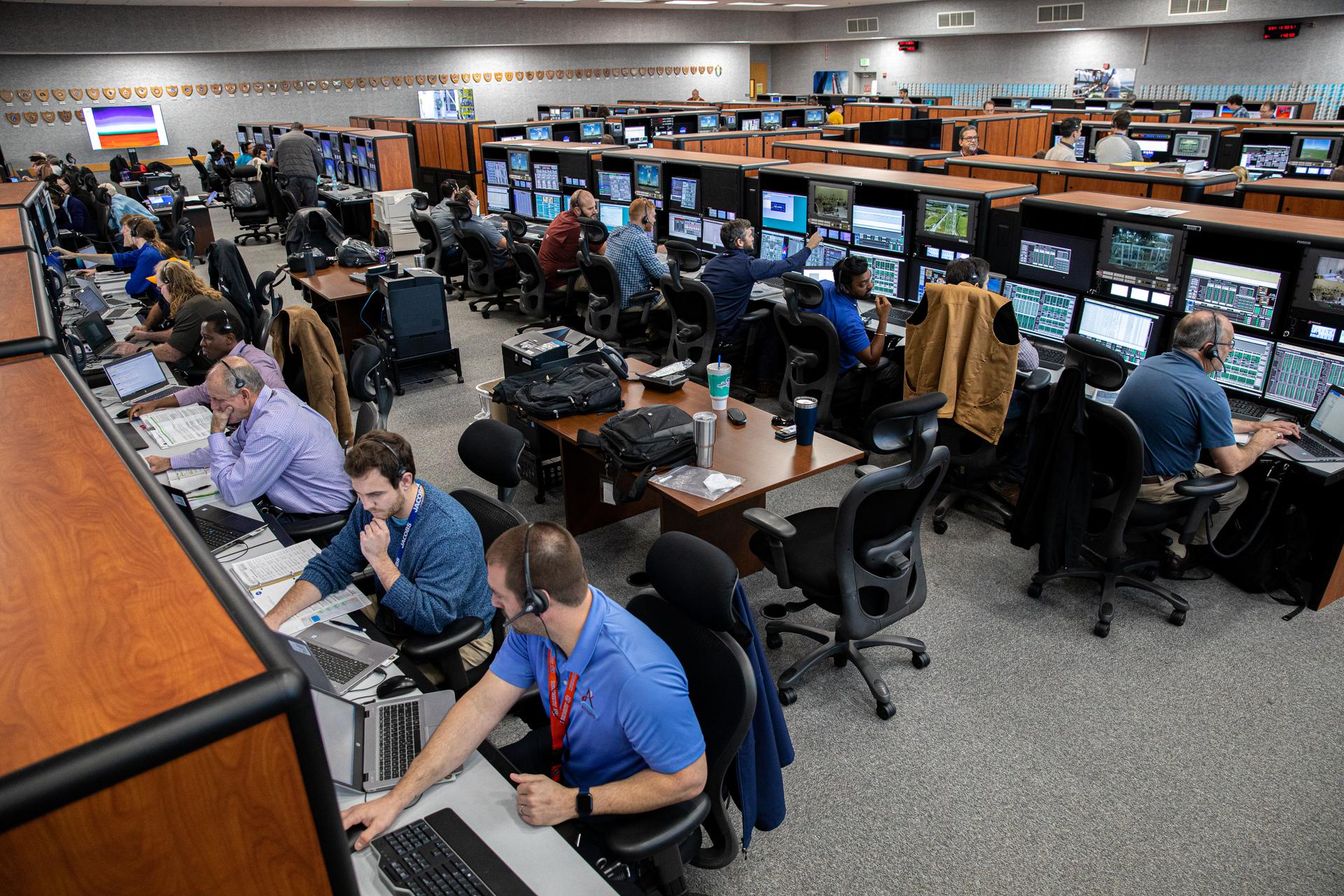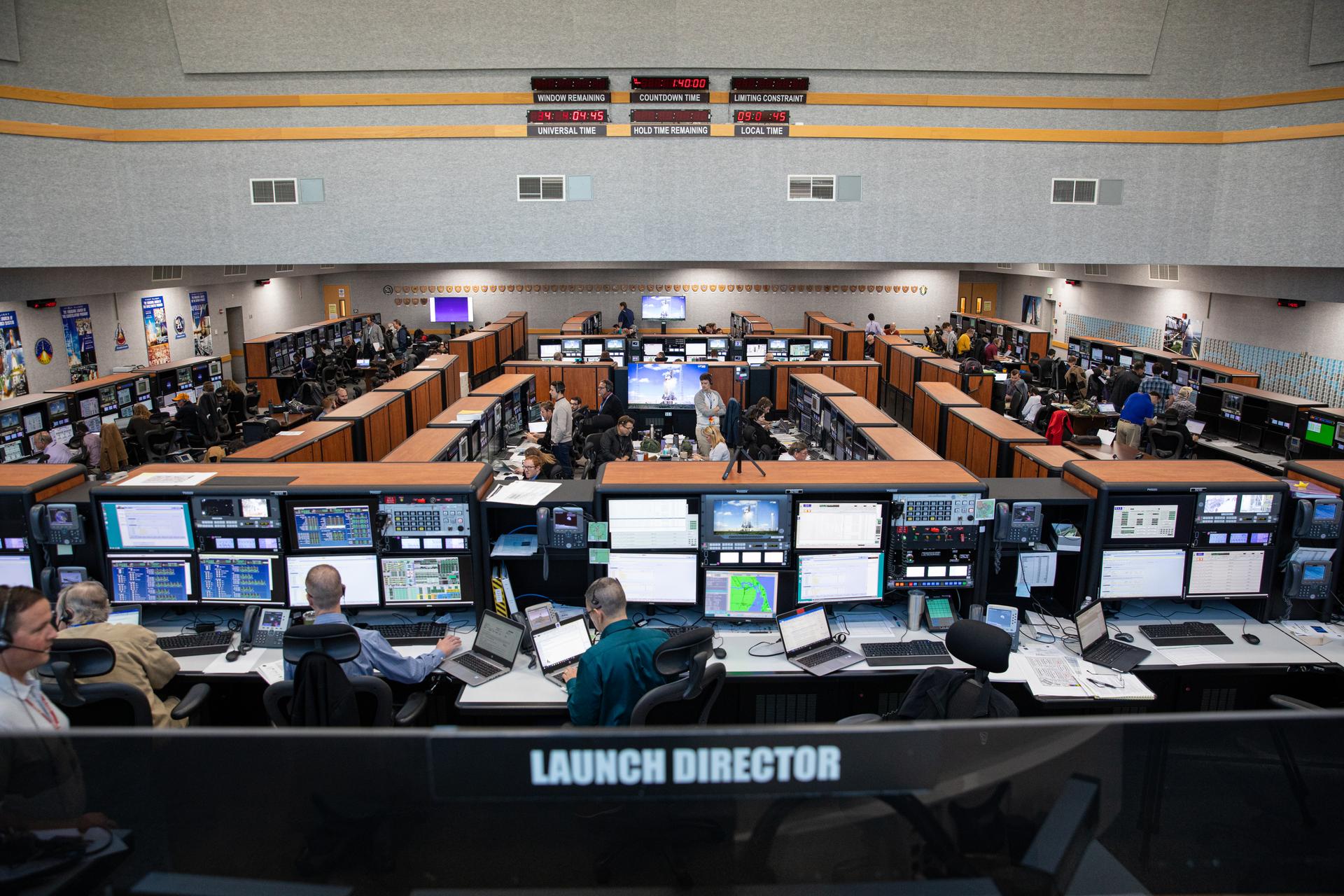
By Anna Heiney
NASA’s Kennedy Space Center
NASA is preparing for the first uncrewed flight test next year of the agency’s powerful new rocket and spacecraft in development for the Artemis lunar exploration program. The Exploration Ground Systems team of launch controllers who will oversee the countdown and liftoff of the Space Launch System (SLS) rocket and Orion spacecraft are practicing – and perfecting – the procedures required for a successful launch.
The Artemis I launch team at the agency’s Kennedy Space Center in Florida is simulating critical portions of the countdown to ensure everyone is ready to handle any situation launch day throws their way. Under the leadership of Launch Director Charlie Blackwell-Thompson, the team gathered at consoles inside the Launch Control Center’s Firing Room 1 on Feb. 3, 2020, for a realistic run-through of the terminal count – the final stretch of the countdown that ends with booster ignition.
“These are always great days, as our team gets an opportunity to learn together,” Blackwell-Thompson said of the Feb. 3 simulation. “Our team got to work through a variety of problems while also completing the work steps in the launch countdown to get to T-zero.”.
If it sounds as though the launch team is simply stepping through prelaunch checklists, think again. While the team proceeds through operations as planned, a small group of masterminds introduces anomalies and other unexpected situations that controllers and launch managers must solve in real-time. It’s a time-tested method NASA has used to hone launch teams’ skills during all the agency’s human spaceflight programs.
While some simulations focus on specific operations, such as propellant loading, others – like the one on Feb. 3 – allow the team to gain critical experience dealing with surprises during the part of the countdown when hold times are limited and the stakes are high.
In other words, it’s the closest a team can get to practicing launch day and racing the countdown clock without a vehicle on the pad.
“If I liken it to a team sport, sims are like your scrimmage game, and they’re an important part of developing a high-performing team,” Blackwell-Thompson explained. “Each time you do a sim, you learn something and grow as a team.”
Launch Team Training includes the Simulation Training Team, which combines a mix of NASA’s Exploration Ground Systems program, civil servants and contractors with Jacobs under the Test and Operations Support Contract. Several members of the simulation training team have career roots in the Space Shuttle Program, allowing them to build on their prior experience with spaceflight hardware and a well-trained launch team.
The NASA test director and launch director have some input into what sorts of situations the launch team should practice, but the sim team leads the effort to prioritize and devise exercises. To keep the experience as realistic as possible, the launch team uses the same consoles and software they’ll operate on launch day, with software emulators standing in to play the role of the vehicle and other critical systems.
For added authenticity, the day’s planned issues and anomalies are largely kept secret until they arise during rehearsal.
“Only the sim team and a few trusted agents know what problems will be introduced,” Blackwell-Thompson said.
Occasionally, an anomaly pops up that’s not engineered by the sim team. When an actual problem is uncovered, managers and controllers will document it and collect any beneficial data to help understand and resolve the issue after the simulation. If necessary, a “sim anomaly” will be declared so the launch team knows it’s a real issue and not part of the exercise.
At the end of every sim, controllers stay at their consoles, headsets on, to discuss the day’s performance and the issues encountered.
“We do a team debrief on the net and talk every problem, what we did well, what we need to improve upon, and any changes to procedures or requirements,” Blackwell-Thompson said.
One of the biggest challenges facing the team now is simply fitting them into the busy Firing Room 1 schedule. With ground systems verification and validation testing, software development and testing, and simulations, it’s a busy place.
“There are a lot of us wanting time in the firing room,” Blackwell-Thompson said. “Anytime we get the launch team in Firing Room 1, that’s a good day.”
Artemis I is the first in a series of increasingly complex missions leading to the landing of the first woman and next man on the surface of the Moon by 2024. The lessons learned on the Moon will pave the way to sending astronauts to Mars.





























